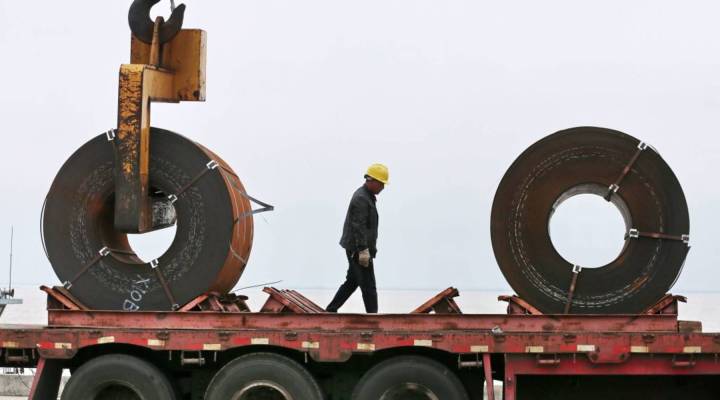
To exempt or not: How the Commerce Department decides who pays steel tariffs
To exempt or not: How the Commerce Department decides who pays steel tariffs

Since President Donald Trump decided to levy tariffs on imports of steel and aluminum last March, the Commerce Department has been inundated with nearly 50,000 applications from companies seeking exemptions from the tariffs — 10 times the amount it initially expected.
More than 25,000 of those applications have now been processed, according to the latest information available from the Commerce Department. Half the processed applications have been approved and 20 percent denied, while the rest were returned to companies for additional information.
Companies seeking an exemption typically argue they cannot get the product they want from a U.S. supplier in the quantity or quality required, but these applications often face objections from U.S. steel and aluminum producers who argue the opposite — that the desired import or a suitable substitute can be sourced in the United States.
How the Commerce Department vets this conflicting information isn’t clear.
Marketplace put this question to the Commerce Department and filed a Freedom of Information Act request for documents related to its training and evaluation processes. Thus far, the agency has only partially responded to the request.
“The documents … show that there is machinery for making those decisions, but we still don’t know how the judgement calls are being made internally,” said Bernd Janzen, a partner in the international trade practice at Akin Gump, who reviewed the documents the department sent to Marketplace.
Materials included manuals and slides from training presentations. Several slides contained a series of questions the Commerce Department is supposed to consider in analyzing exclusion requests, such as whether U.S. producers could start supplying a product they don’t currently produce by building additional capacity and how many weeks it would take to ramp up production.
However, other pages that seemed to contain additional information or checklists for evaluating exemption requests and objections were blacked out.
“The redactions are quite significant,” Janzen said.
Data suggests industry objections weigh heavily in Commerce Department decisions.
Reporting by the New York Times in August found the agency hadn’t granted a single steel exemption request that drew an objection and only granted 20 objected applications for aluminum. The department didn’t respond to a request for updated figures this week.
That seeming reliance on objections is troubling, said Christine McDaniel, a senior research fellow at the Mercatus Center at George Mason University.
She analyzed tallies of all the steel that companies have asked the Commerce Department to be allowed to import tariff-free, as well as all the objections on those applications, and found the numbers don’t align.
“The steel producers in the U.S. are claiming to be able to produce an amount of steel way above and beyond even what their current production is,” she said.
If applications and objections are considered in isolation, it may be that a domestic producer could supply the requested quantity of the product one company wants to import. But some companies are filing objections to hundreds, occasionally even thousands, of exemption applications. Three steel companies account for nearly half the submitted objections, according to McDaniel.
When taken together, McDaniel said the cumulative amount of steel that companies are objecting to is significantly larger than what they can currently produce.
The Commerce Department didn’t respond to questions about whether the agency is keeping track of how much each firm is saying it can produce. However, in September, it did begin allowing companies to respond to the objections other companies filed on their applications; the objectors then get their own chance to rebut. This will lengthen the amount of time it takes to issue exemption determinations, but may also give companies and the department a better opportunity to sift through competing claims.
There’s a lot happening in the world. Through it all, Marketplace is here for you.
You rely on Marketplace to break down the world’s events and tell you how it affects you in a fact-based, approachable way. We rely on your financial support to keep making that possible.
Your donation today powers the independent journalism that you rely on. For just $5/month, you can help sustain Marketplace so we can keep reporting on the things that matter to you.












